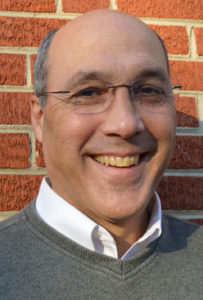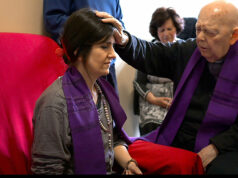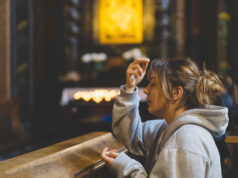
As I write this in mid-March, the world is gripped by the pandemic caused by the coronavirus. Locally, nationally and globally, the world is mustering resources to slow the spread of COVID-19 to not overwhelm our health systems and to buy time as researchers discover more effective treatments and a vaccine.
What strikes me is how quickly people have come together around a common purpose with a recognition that only through common effort can we get through this crisis.

As someone working on climate change full time, I can’t help but imagine a world in which the climate crisis was met with the same urgency and resolve as this pandemic. In many ways, climate change is a slow-moving pandemic but with the potential of far greater consequences even if they are spread out over a period of years or decades rather than several months.
In the five years since the release of Pope Francis’ encyclical, “Laudato Si’: On Care for Our Common Home,” I wish that more had been done in our faith community to take advantage of this remarkable document where Pope Francis warns us of the environmental destruction caused by our own human actions, especially by those of us in wealthier nations.
He pleads with us to hear the cry of the earth and the cry of the poor, linking the fate of our earth with the fate of humanity, especially the most vulnerable.
Catholic Climate Covenant, an organization I am pleased to pilot, has worked to take advantage of this new moment and encourage more Catholics to act. Many of our 19 national Catholic partners have worked side by side with us to educate constituents about “Laudato Si'” (which expands the teaching of St. John Paul II and Pope Benedict XVI) and to spur action to save our common home from our foolishness.
One measure of success is that our parish Creation Care Team program has grown to well over 300 dedicated adults trying to make a difference in their communities. Another measure is that we counted 120 bishops’ statements or articles written within a few months of June 18, 2015, the date the Vatican released “Laudato Si’.”
Polls also indicate that there was an uptick of a few percentage points among Catholics who embraced the science of climate change, that the poor will be most impacted and that we have a responsibility to lower our carbon footprint.
Young people — including Catholic youth — demonstrate a growing concern about their future. This is in evidence by the number of college students urging their Catholic universities to divest from fossil fuels. Some schools, like the University of Dayton, embraced this strategy almost immediately, and others, like Creighton University, have joined the movement recently.
A number of dioceses have made creation care a priority with the support and encouragement of their bishops. For the Diocese of Stockton, California, and Bishop Stephen E. Blaire, who went home to God June 2019, “Laudato Si'” was a boost to the efforts they had been leading for years. An environmental justice coordinator had been a key position within Catholic Charities of Stockton for nearly a decade before the encyclical was released.
The Archdiocese of Cincinnati was one of the first to have a diocesanwide creation care team working with many of its parishes and schools to institute recycling programs, plant community gardens and educate Catholics on the many ways they could tread more gently on this good earth.
Shortly after “Laudato Si'” was released, the Archdiocese of Atlanta, with Archbishop Wilton D. Gregory’s approval, put together a 40-page “Laudato Si'” implementation plan, a blueprint that has been copied by many.
Many other dioceses and archdioceses have stepped up with similar programs and resources including San Diego, Hartford, New York, Columbus and Chicago.
Frustrated in trying to answer a question I would get frequently from everyday parishioners — “Why can’t I get my pastor to talk about this?” — led me to try another approach: “What if we showed them how much money they could save through smart energy efficiency and renewable energy programs?”
Once we got their attention we could then “backdoor” the teaching saying: “This is more than saving money; it’s also about being good stewards of precious resources on an abundant but finite planet.” The plan worked.
A 2-megawatt solar project for Catholic Charities in the Archdiocese of Washington generates a quarter million dollars in annual energy savings, money that can be used to counsel the lost, feed the hungry and shelter the homeless.
Parishes across Virginia are joining the solar energy party to be a witness to the wider community and their younger parishioners as well as save money and lower emissions after Father John Grace of Immaculate Conception Church in Hampton, Virginia, was the first to show off the work of our Catholic Energies team.
So how has the U.S. church responded five years after the release of “Laudato Si'”? If I’m honest, not nearly to the degree I would have hoped nor commensurate with the scope of the challenge we are facing.
The pandemic is a lesson: We must all do something, we need individual, governmental, business and nonprofit solutions to a slow-moving crisis. Climate scientists, just like epidemiologists, are warning of the impending crisis. Will we listen?
— By Dan Misleh Catholic News Service
Misleh is the founder and executive director of Catholic Climate Covenant. Previously he was director of diocesan relations for the Department of Justice, Peace and Human Development at the U.S. Conference of Catholic Bishops.







